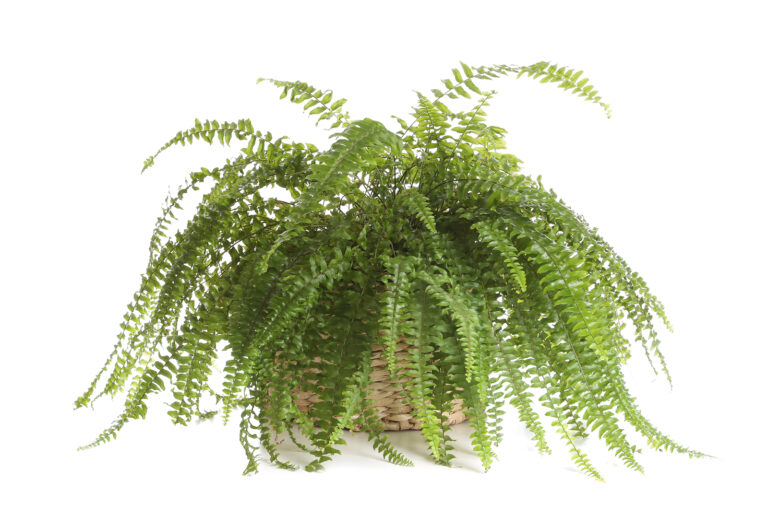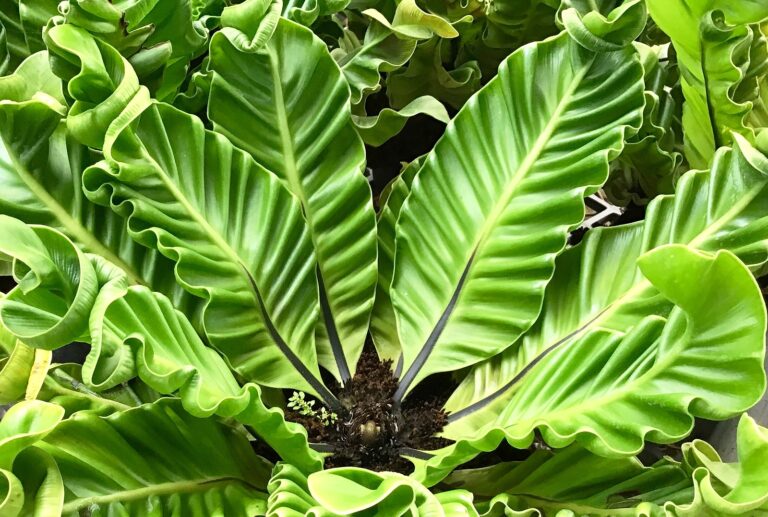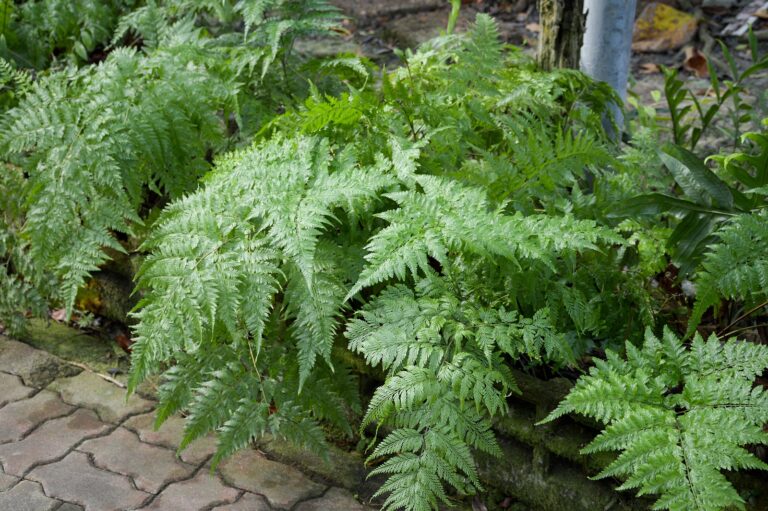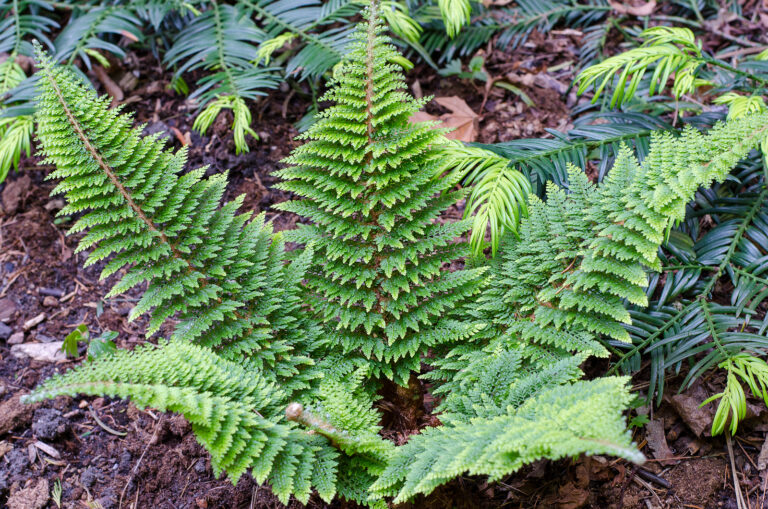How to Grow Osmunda – Royal Fern
Osmunda genus includes the ferns commonly called cinnamon fern and royal fern. Osmunda is a genus of imposing ferns. All are large, coarse, deciduous ferns.
Osmunda has broadly lance-shaped to triangular-ovate pinnate fronds. The fronds arise from large erect rhizomes. Fronds turn yellow or golden brown in autumn. Fertile fronds produce clusters of spherical greenish sporangia which turn rust-brown or blackish.
Grow Osmunda in damp borders or at the margins of a pond or stream. Osmunda is a striking focal point near a waterside.
Osmunda rhizomes have a heavy growth of matted brown roots–these fibrous roots are used for potting orchids.
Osmunda is a genus of 12 species of deciduous ferns ground in damp places in all continents except Australasia.
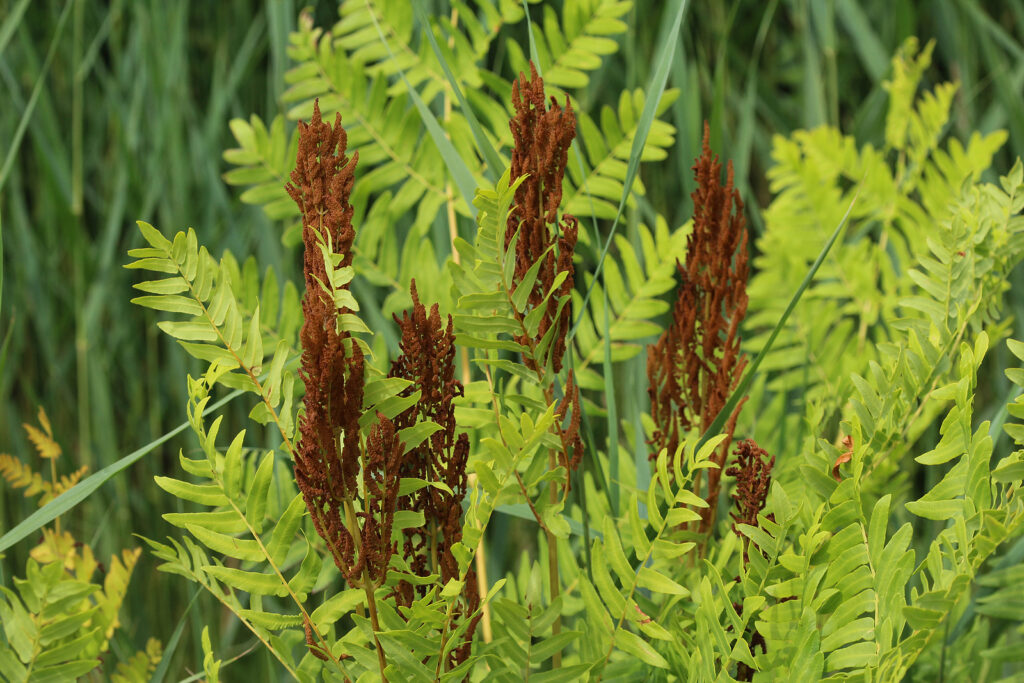
Get to know Osmunda
- Plant type: Ferns
- Growing zones and range: Zones 2 to 10
- Hardiness: Hardy to Zone 2
- Height and width: Cinnamon ferns can grow 2 to 5 feet (0.6-1.5m) tall; royal fern can grow to 6 feet (2m) tall and 12 feet (4m) wide.
- Growth rate: =Moderate
- Form and habit: Erect fronds
- Foliage: Broadly lance-shaped to triangular-ovate or ovate, pinnate, 2-pinnate, or 2-pinnatifid sterile fronds arise from large, erect rhizomes and turn yellow or golden brown in autumn; distinctive, partially or wholly fertile fronds produce branched clusters of spherical greenish sporangia, which turn rust-brown or blackish on reduced pinnae; the fiddleheads and leaf stalks are densely covered with hair
- Fruits: Spores are produced either on separate, specialized, often cinnamon-colored or brown fronds; spore-bearing parts lack leafy tissue altogether
- Uses: Damp border, margins of a pond or stream, striking focal point near a waterside, naturalistic plantings
- Common name: Flowering fern
- Botanical name: Osmunda
- Family name: Osmundaceae
- Origin: In damp places on all continents, except Australasia
Where to plant Osmunda
- Plant Osmunda in light, dappled shade, although many are perfectly sited in full sun.
- Plant Osmunda in moist, fertile, humus-rich, preferably acidic soil.
When to plant Osmunda
- Sow Osmunda spores at 59-61°F (15-16°C) within 3 days of ripening in summer; they lose viability quickly.
- Set container grown Osmunda in the garden in spring or autumn.
Planting and spacing Osmunda
- Plant Osmunda 2 feet (.6m) apart.
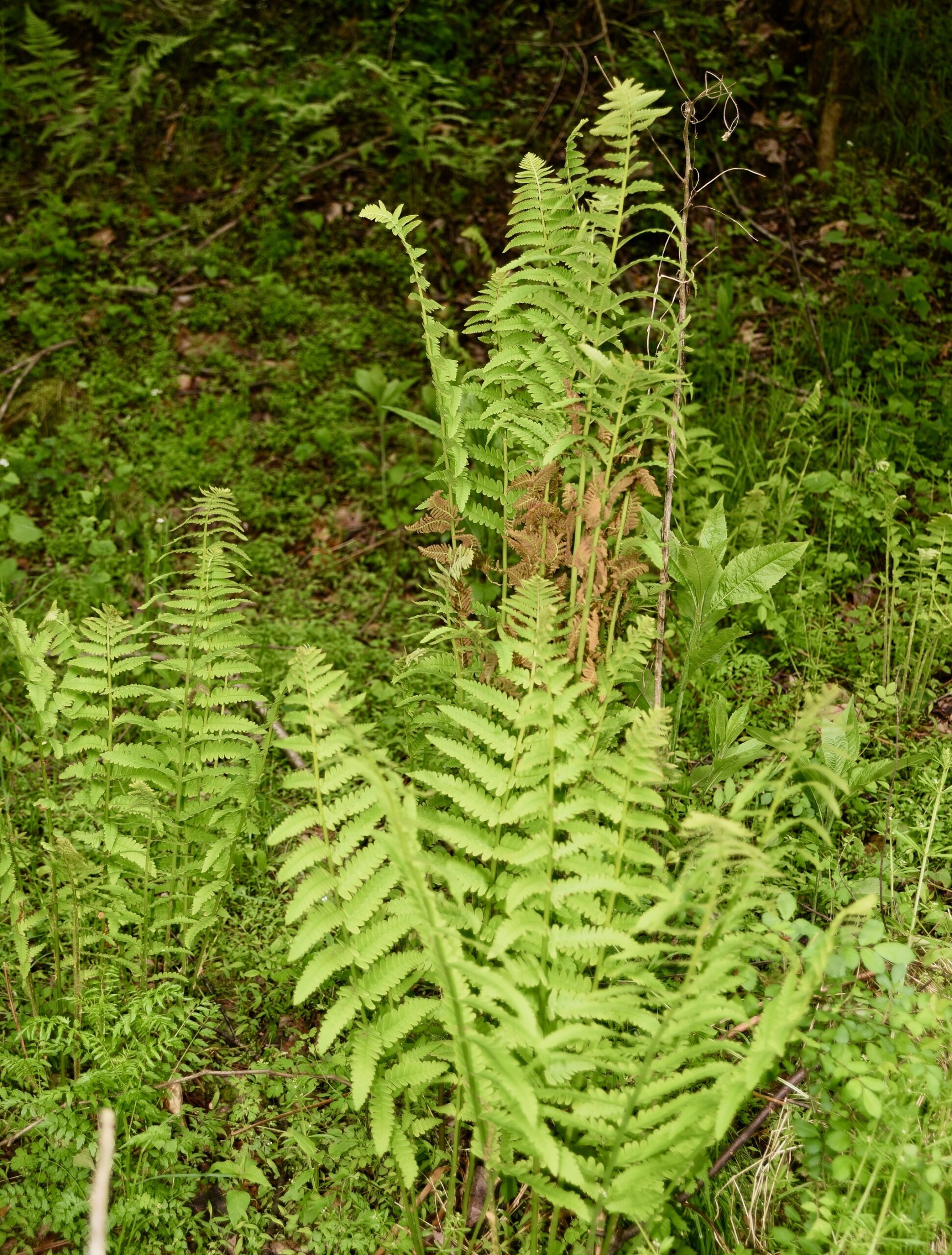
How to water and feed Osmunda
- Keep soil around Osmunda damp to wet.
- Feed Osmunda with an all-purpose organic fertilizer in spring.
How to care for Osmunda
- Osmunda grows best when the ground is kept damp.
Osmunda pests and diseases
- Osmunda are prone to rust.
Osmunda propagation
- Divide Osmunda clumps from established colonies in autumn or early spring.
Osmunda varieties to grow
- Osmunda cinnamomea, Cinnamon fern, deciduous fern bearing shuttlecocks of ovate-lance-shaped, pinnate, pale green sterile fronds, 2-5 feet (.6-1.5m) long, with pinnatifid segments, surrounding much narrower, erect fertile fronds, to 3 feet (1m) long. The top of each fertile frond is a mass of cinnamon-brown sporangia in spring. To 36 inches (90cm) tall and 24 inches (60cm) wide. East North America. Zones 2 to 10.
- O. claytoniana, Interrupted fern, deciduous fern bearing shuttlecocks of ovate-lance-shaped, pinnate, pale green sterile fronds, to 36 inches (90cm) long, with pinnatifid segments; they surround taller fertile fronds, similar but with some of the middle pinnae reduced and, in late spring, covered in sporangia, which are initially blackish, later yellow-green, then rust-brown. To 36 inches (90cm) tall and 24 inches (60cm) wide. East North America. Zones 2 to 10.
- O. regalis, Flowering fern, Royal fern, deciduous fern producing dense clumps of broadly triangular-ovate, 2-pinnate, bright green sterile fronds, 3 feet (1m) or more long. In summer, partially fertile fronds, to 6 feet (2m) long, have tassel-like tips, with brown or rust-colored sporangia, covering the much smaller pinnae. The fibrous rootstock is the source of osmunda fiber, used as a potting mix for orchids. To 6 feet (2m) tall and 12 feet (4m) wide. Temperate and subtropical regions. Zones 2 to 10.



